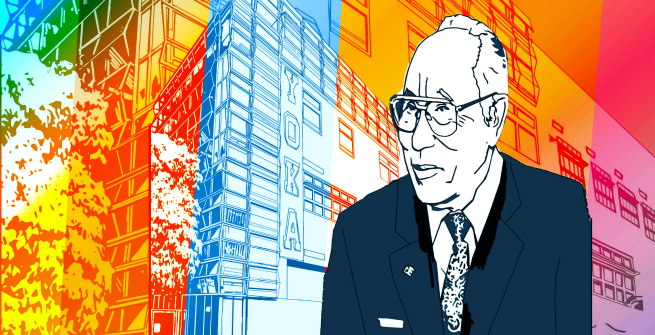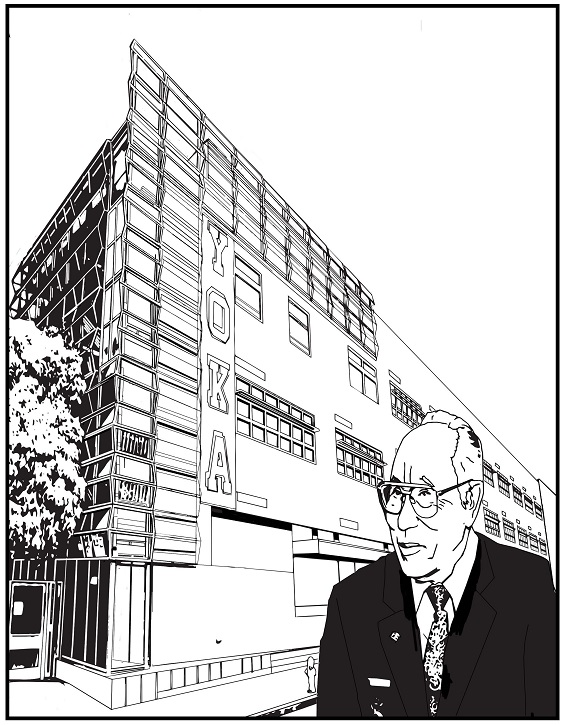Young Oak Kim, born in Los Angeles in 1919, was a Korean American United States Army officer during World War II and the Korean War, as well as a civic leader and humanitarian.
Early Life
Kim was a first-generation American born into a Korean family on January 26, 1919, in Los Angeles. Raised with a great sense of patriotism, Kim’s path to the Army was not smooth, as the military often rejected Asian Americans who wanted to enlist. This changed when World War II broke out in Europe in 1939. Congress passed the Selective Training and Service Act of 1940, and all able-bodied men, regardless of race, were subjected to the draft. Kim’s draft number was one of the first called, and he entered the Army in January 1941.
Interestingly, as a young man, Kim was also friends with another legend of the Korean-American community Dr. Sammy Lee. Lee would become the first Asian-American to win an Olympic Gold Medal when in the 1948 and 1952 Olympic games.
World War II
Kim was initially enlisted as an engineer before being selected for Infantry Officer Candidate School (OCS). Upon graduation from OCS in 1943, Kim was then assigned to the newly formed 100th Battalion of the 442nd Regimental Combat Team, which was composed of mostly Japanese-Americans from Hawaii. Despite his strong Korean nationalist background, Kim had no problems serving with Japanese Americans because he considered them and himself all Americans fighting for a common cause.
Kim would go on to fight with the 442nd RCT in North Africa and Italy, where he participated in the Battle of Anzio and the liberation of Rome. Kim would then next move from Italy to fight the Germans in France, where he was critically wounded by a gunshot and forced to return to Los Angeles to recover. Kim's actions during his service in Europe led to him receiving much acclaim and numerous awards for valor as the 442nd RCT went on to become the most highly decorated combat unit in World War II.
With the end of World War II, Kim left the service and decided to open a laundromat in Los Angeles, which was a new concept at the time. Kim had some moderate success with his business.
Korean War
When the Korean War broke out in 1950, Kim decided to sell his business and once again join the US military to fight in Korea. He explained later that "As a Korean, the most direct way to help my father’s country even a little, and as a U.S. citizen, the most direct way to repay even a little the debt owed to Korea by the U.S. was to go to Korea, pick up a gun and fight."
Even though Kim was assigned as an intelligence officer with the 31st Infantry Regiment, Kim personally led many combat missions that rescued trapped allied troops, including the first American unit to cross the 38th Parallel. During this time, Kim was promoted to Major and appointed as the first Asian-American to command a combat battalion in the US military.
Kim retired from the military in 1972. During his long career, he earned 19 medals. Most notably, he was awarded the Distinguished Service Cross, the Silver Star, two Bronze Stars, three Purple Hearts, and the French Croix de Guerre. On February 4, 2005, Kim was presented with the National Order of the Legion of Honor award from the government of France. This award is the highest bestowed to its citizens and foreign nationals.
Dedication to Asian American Communities
During his retirement became very active in Asian American community affairs. He helped found the Go for Broke Educational Foundation, the Korean Health, Education, Information and Research Center, the Korean American Coalition, the Korean American Museum, and the Korean Youth and Cultural Center. Considering Kim’s Korean background, it can be very surprising, but he also helped found the Japanese American National Museum. Despite Kim’s close ties to the Japanese-American community, he was also a strong advocate of Congressman Mike Honda’s non-binding Congressional Resolution demanding an apology and compensation from the current Japanese government over the comfort women issue.
Young-oak Kim passed away on December 28, 2005, at the age of 86, in California. In 2009, a middle school in the Los Angeles public school system was named after him. In 2010, the University of California at Riverside opened the Young Oak Kim Center for Korean American Studies.




